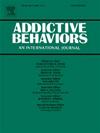Associations among screen time, depressive symptoms and sleep in early adolescents: A sex-disaggregated cross-lagged network analysis
IF 3.7
2区 医学
Q1 PSYCHOLOGY, CLINICAL
引用次数: 0
Abstract
Background
Prior research has established associations among screen time, depressive symptoms, and sleep. However, the nuances of these associations, particularly regarding directionality and sex-specific differences among early adolescents, remain insufficiently understood. This study aimed to investigate sex differences in the longitudinal associations among screen time, depressive symptoms, and sleep at the symptom level during early adolescence.
Methods
Our cohort consisted of 2987 students (1451 boys at T1; Mage = 10.52 years), who were assessed twice over six-month intervals. Sex-stratified analyses in the network associations among screen time, depressive symptoms, and sleep were examined via a cross-lagged panel network modeling approach.
Results
The results revealed that depressive symptoms such as “feeling unloved” for boys and “sadness” for girls were the most central symptoms with the greatest influence on other symptoms. Furthermore, depressive symptoms such as “crying” and “loneliness” for boys and “self-hatred” and “loneliness” for girls may act as bridge symptoms, significantly forecasting excessive screen time after six months.
Conclusions
Our findings bolster the compensatory internet use theory by suggesting that screen time may function as a coping mechanism for managing depressive symptoms and sleep problems. These findings advance our comprehension of the evolving dynamics among screen time, depressive symptoms, and sleep across sexes over time. The development of targeted prevention and intervention strategies that accommodate these sex differences could be instrumental in curtailing the onset or intensification of problematic screen use among early adolescents.
青少年早期屏幕时间、抑郁症状和睡眠之间的关系:性别分类的交叉滞后网络分析
先前的研究已经确定了屏幕时间、抑郁症状和睡眠之间的联系。然而,这些关联的细微差别,特别是关于早期青少年的方向性和性别特异性差异,仍然没有得到充分的了解。本研究旨在探讨青春期早期屏幕时间、抑郁症状和睡眠在症状水平上的纵向关联的性别差异。方法我们的队列包括2987名学生(T1时男生1451名;年龄= 10.52岁),每隔6个月进行两次评估。通过交叉滞后面板网络建模方法,对屏幕时间、抑郁症状和睡眠之间的网络关联进行了性别分层分析。结果男孩的“感觉不被爱”和女孩的“悲伤”等抑郁症状是最核心的症状,对其他症状的影响最大。此外,男孩的“哭泣”和“孤独”等抑郁症状,女孩的“自我憎恨”和“孤独”等抑郁症状可能是过渡症状,明显预示着6个月后屏幕时间过长。结论:我们的研究结果支持代偿性网络使用理论,表明屏幕时间可能是控制抑郁症状和睡眠问题的应对机制。这些发现促进了我们对屏幕时间、抑郁症状和睡眠之间的演变动态的理解。制定有针对性的预防和干预策略,以适应这些性别差异,可能有助于减少青少年早期屏幕使用问题的发生或加剧。
本文章由计算机程序翻译,如有差异,请以英文原文为准。
求助全文
约1分钟内获得全文
求助全文
来源期刊

Addictive behaviors
医学-药物滥用
CiteScore
8.40
自引率
4.50%
发文量
283
审稿时长
46 days
期刊介绍:
Addictive Behaviors is an international peer-reviewed journal publishing high quality human research on addictive behaviors and disorders since 1975. The journal accepts submissions of full-length papers and short communications on substance-related addictions such as the abuse of alcohol, drugs and nicotine, and behavioral addictions involving gambling and technology. We primarily publish behavioral and psychosocial research but our articles span the fields of psychology, sociology, psychiatry, epidemiology, social policy, medicine, pharmacology and neuroscience. While theoretical orientations are diverse, the emphasis of the journal is primarily empirical. That is, sound experimental design combined with valid, reliable assessment and evaluation procedures are a requisite for acceptance. However, innovative and empirically oriented case studies that might encourage new lines of inquiry are accepted as well. Studies that clearly contribute to current knowledge of etiology, prevention, social policy or treatment are given priority. Scholarly commentaries on topical issues, systematic reviews, and mini reviews are encouraged. We especially welcome multimedia papers that incorporate video or audio components to better display methodology or findings.
Studies can also be submitted to Addictive Behaviors? companion title, the open access journal Addictive Behaviors Reports, which has a particular interest in ''non-traditional'', innovative and empirically-oriented research such as negative/null data papers, replication studies, case reports on novel treatments, and cross-cultural research.
 求助内容:
求助内容: 应助结果提醒方式:
应助结果提醒方式:


